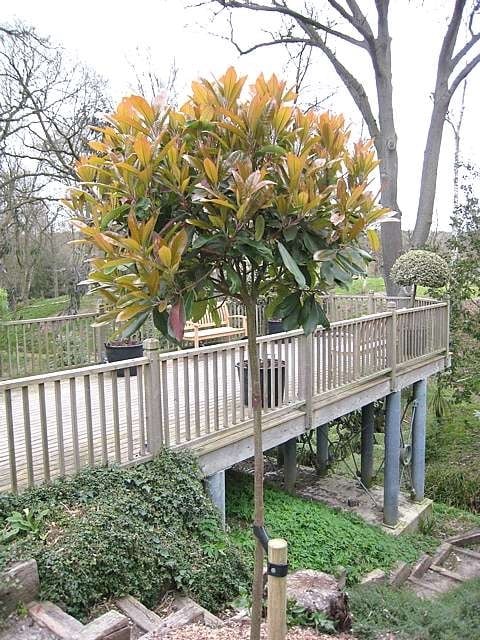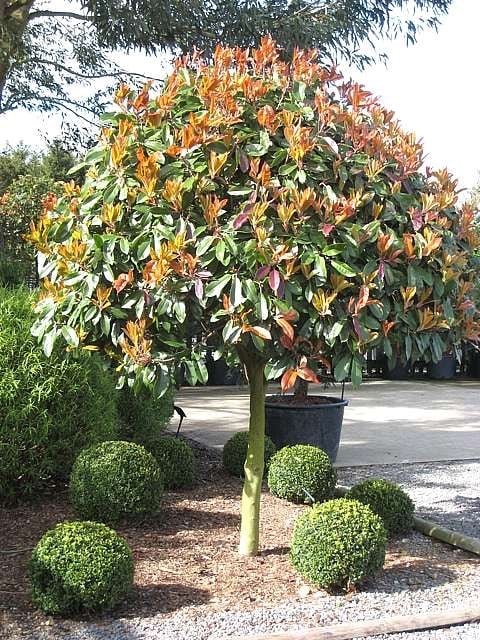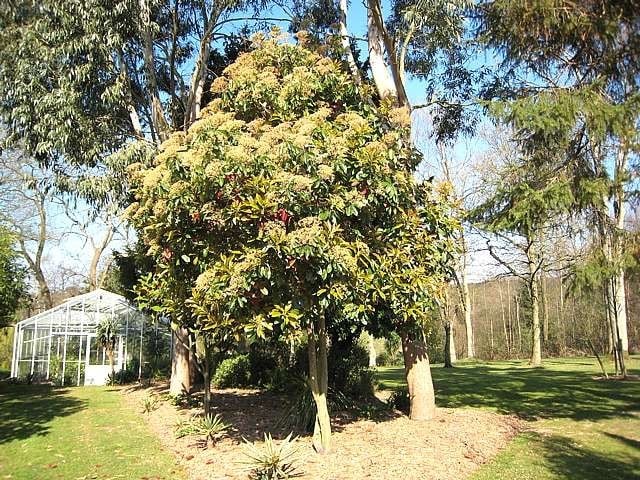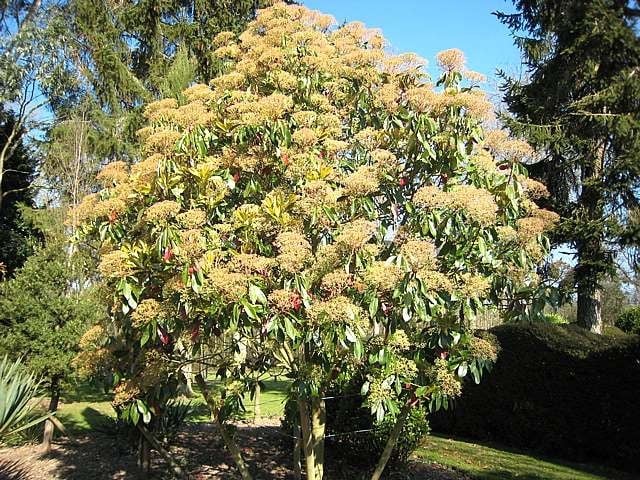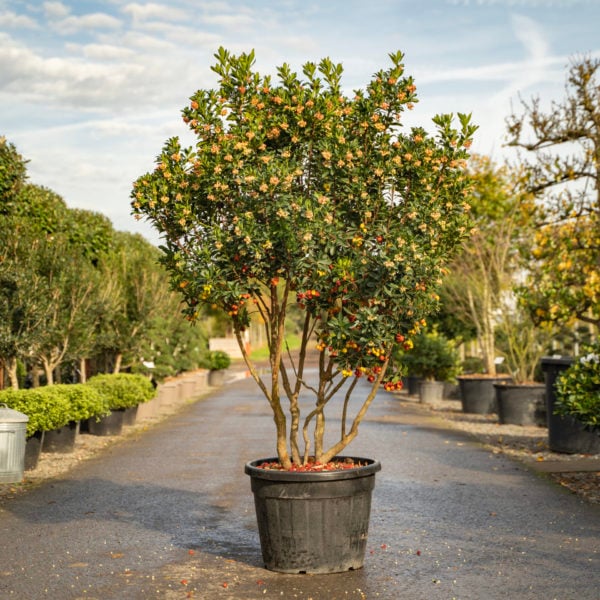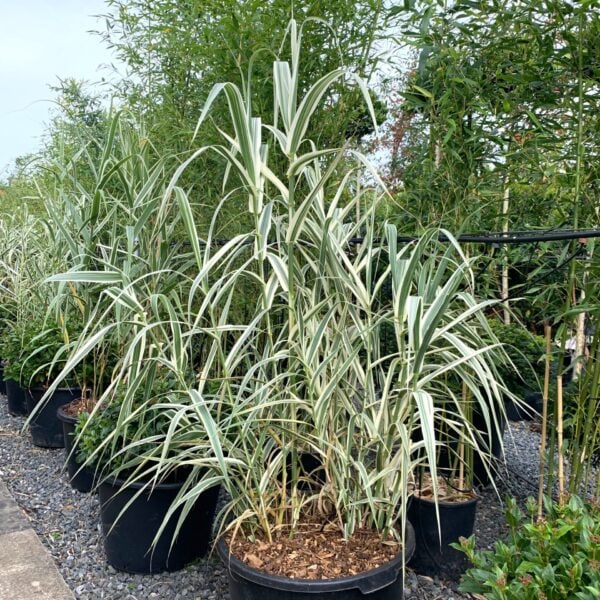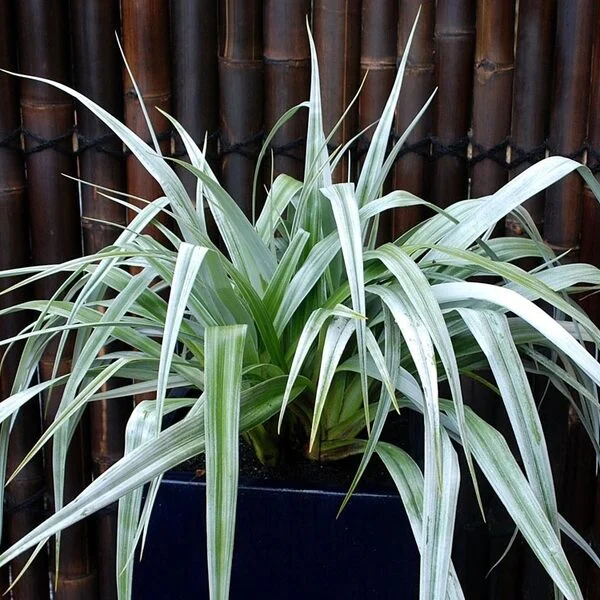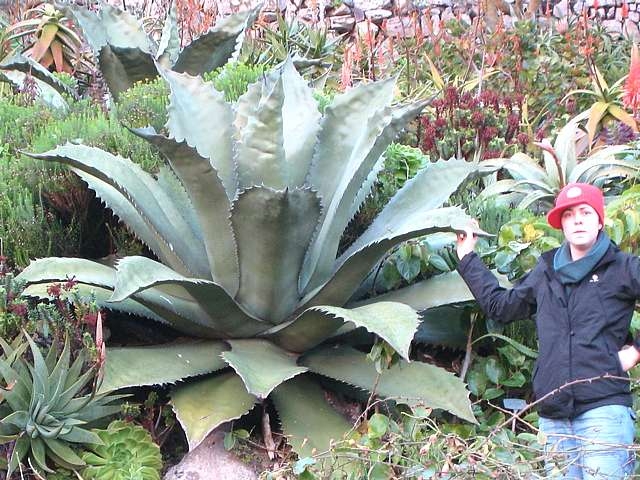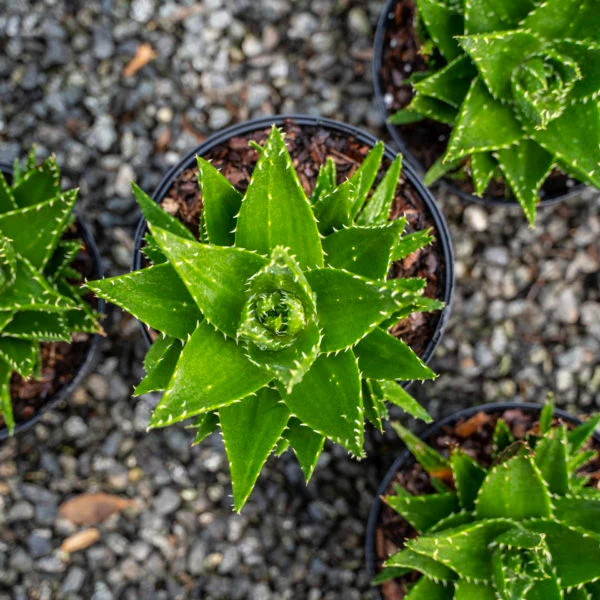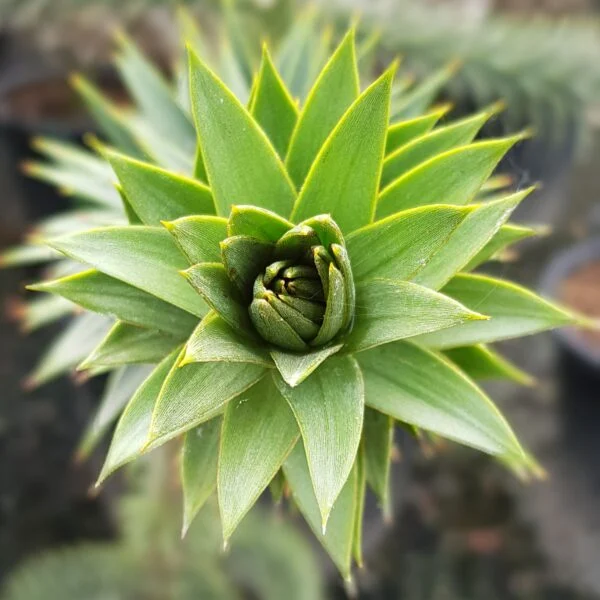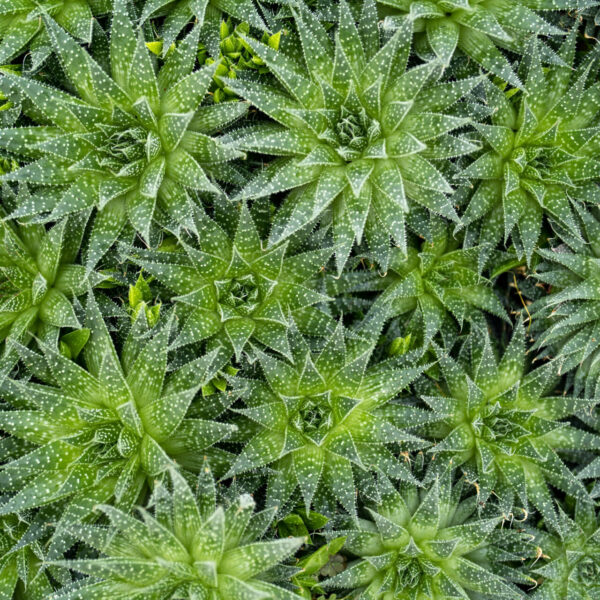Photinia serrulata (Chinese Hawthorn)
Round headed, robust, reliable and exotic little evergreen tree. Shuttlecocks of apricot coloured new leaves in early spring and frothy white flowers. To 15ft in 10 years. Please contact us for stock availability and sizes.

Hardiness level Amber
Round headed, big evergreen leaf, apricot coloured shuttlecocks of new leaves very early in the spring followed by copious quantities of frothy white flowers. The common name is Chinese Hawthorn as it's related and the flowers look and smell quite Hawthorn like. It's also very closely related and similar in many ways to Eriobotrya japonica (Loquat or Nespilo). It has the seductive and unusual habit of growing quite fast to about 15 ft and then slows down. A 20 ft tree is quite unusual but then this tree is rare in cultivation so what do we know? I only know of one in Ventnor Botanic Garden and one in Ryde High St (both in the Isle of Wight) and one near the old Spitfire factory in Kingston, Surrey.
It's reliable, beautiful, quietly exotic and disinclined to any particular pests or diseases. Is this little tree near perfect? Yes. But do you hear a 'but' coming round the corner? Yes; it's easy to grow but not that easy to propagate from cuttings so it's always in short supply.
Left to its own devices, this would grow as a giant shrub (multi-stemmed) but we grow them as a single trunked tree. You can clip it and shape it but it's one of the few trees that we grow that can happily be left to do its own thing. The young growth appears so early in the spring that you could be forgiven for worrying about the effects of frost. Don't be. One more seductive attribute of this remarkable plant is the fact that the new growth will be untouched by temperatures as low as -5°c. Not the case with most east Asian plants - young growth subjected to even -1°c is blackend immediately.
Any reasonably well drained soil - including thin soil over chalk - and plenty of light to allow it to form its nice domed shape. Avoid very windy spots. The leaves are too big and the branches too brittle for very exposed situations.
Propagated by us from cuttings - originally from the tree in Ventnor Botanic Gardens.
Not to be confused with Photinia Red Robin. It's related but bears little resemblance. This is the polite version.
N.B. When clipping several plants with the same tool, have a bucket containing a 5% bleach solution and swish your blades around for 30 seconds between plants to sterilise them. This will help avoid the chance of cross contamination of disease.
As with all woody plants, plant high, exposing as much of the taper at the base of the trunk as possible. Allowing soil to accumulate round the base of a tree can be fatal. Keep very well watered when first planted.
Additional Information |
|
|---|---|
| Soil Type | |
| Light | |
| Plant Type | |
| Continent of Origin | |
| Specialist Plants | Grown by Us, Japanese, Rare & Unusual (Collectables), Topiary, Balls and Blobs |
| Features | |
| Tree Size | |
| Situation | Coastal, Mild City Gardens, Plants for Pots, Sheltered Garden |
| Flower Colour | |
| Hardiness | |





